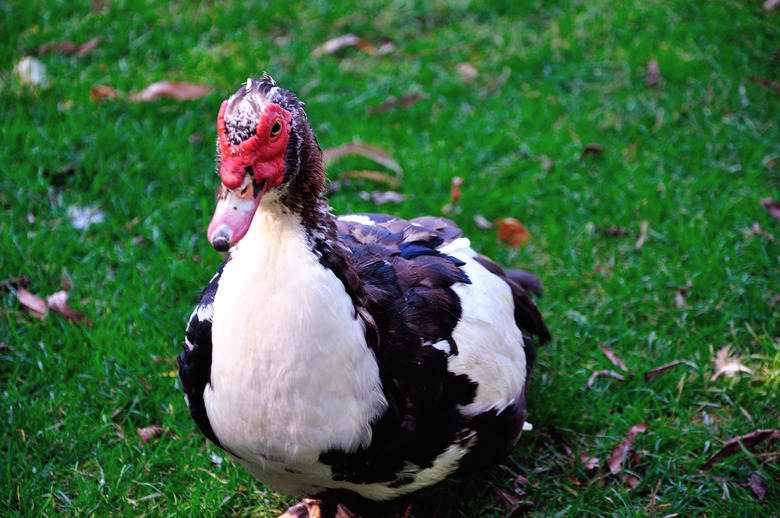What Are Some Adaptations Of A Duck?
Ducks belong to the waterfowl, family. Ducks are smaller than geese and swans, but are more prolific; they live in more places throughout the world and often dominate waterfowl populations. They live in lakes, streams, rivers, creeks, bays, seas and oceans. Ducks as a group have several adaptations, and individual species of ducks possess further adaptations unique to their habits and habitats.
TL;DR (Too Long; Didn't Read)
Ducks have a number of adaptations unique to their habits and habitat. Some individual species have adapted more than others based on their environment. These include differences in their feet, feathers, beaks and behavior that make it easier for them to navigate specific terrain, blend in to avoid predators, and consume available food sources.
Duck Feet
Duck Feet
Duck feet are visually obvious adaptations. All duck species have webbed feet that help them swim. These feet extend laterally when a duck pushes back with its legs and provide maximum surface area for increased efficiency in movement. When ducks move forward through water, their feet contract laterally into hydrodynamic forms, facilitating movement. Different species of ducks possess slightly different feet adaptations. The legs of the mandarin duck, for instance, sit further forward on its body than do most duck legs, allowing it to move more easily on land. The feet of the mandarin provide more gripping power, as mandarin ducks often seek shelter in trees when not in the water.
Duck Feathers
Duck Feathers
Duck feathers have two basic adaptations. The first is an oily coating that prevents water from settling in duck feathers. Staying dry helps ducks stay warm and also decreases their body weight, which improves movement through the water and the air. Color is another common adaptation. The feathers of mallard ducks match the colors of the areas in which mallard ducks live, providing the animals a measure of protection through camouflage. Duck feather coloring and patterns all serve some basic evolutionary function based on the habit and habitat of the animal.
Duck Beaks
Duck Beaks
Duck beaks have adaptations related to the diet of a duck species. Several duck species, such as mallards and whistling ducks, have wide lamellate beaks. These beaks contain membranes shaped like combs that allow ducks to sift small animals and other food sources from water. Ducks with lamellate beaks take mouthfuls of water and let the water slip slowly from their beaks when sifting for food. Merganser ducks, on the other hand, have thin, long serrated bills that help them catch, carve up and consume fish, amphibians, crustaceans and mollusks.
Behavioral Adaptations
Behavioral Adaptations
Ducks such as harlequins, which live in areas noted for food scarcity, have adaptations designed to help them stay alive. Male harlequins leave the nest earlier than most male ducks do, reducing competition for food resources. Harlequins also lay fewer eggs than other duck species, making it easier for mother ducks to keep their offspring alive.
Mallard ducks have various behavioral adaptations that help protect their young. When a nest is threatened, female mallards swim or fly away from the nest, often acting injured. The predator, assuming the duck an easy kill on account of its "injury," follows the mother away from the nest. Baby ducks remain silent in such instances, a safety adaptation.
Cite This Article
MLA
Gish, Will. "What Are Some Adaptations Of A Duck?" sciencing.com, https://www.sciencing.com/adaptations-duck-8471637/. 5 April 2018.
APA
Gish, Will. (2018, April 5). What Are Some Adaptations Of A Duck?. sciencing.com. Retrieved from https://www.sciencing.com/adaptations-duck-8471637/
Chicago
Gish, Will. What Are Some Adaptations Of A Duck? last modified March 24, 2022. https://www.sciencing.com/adaptations-duck-8471637/
